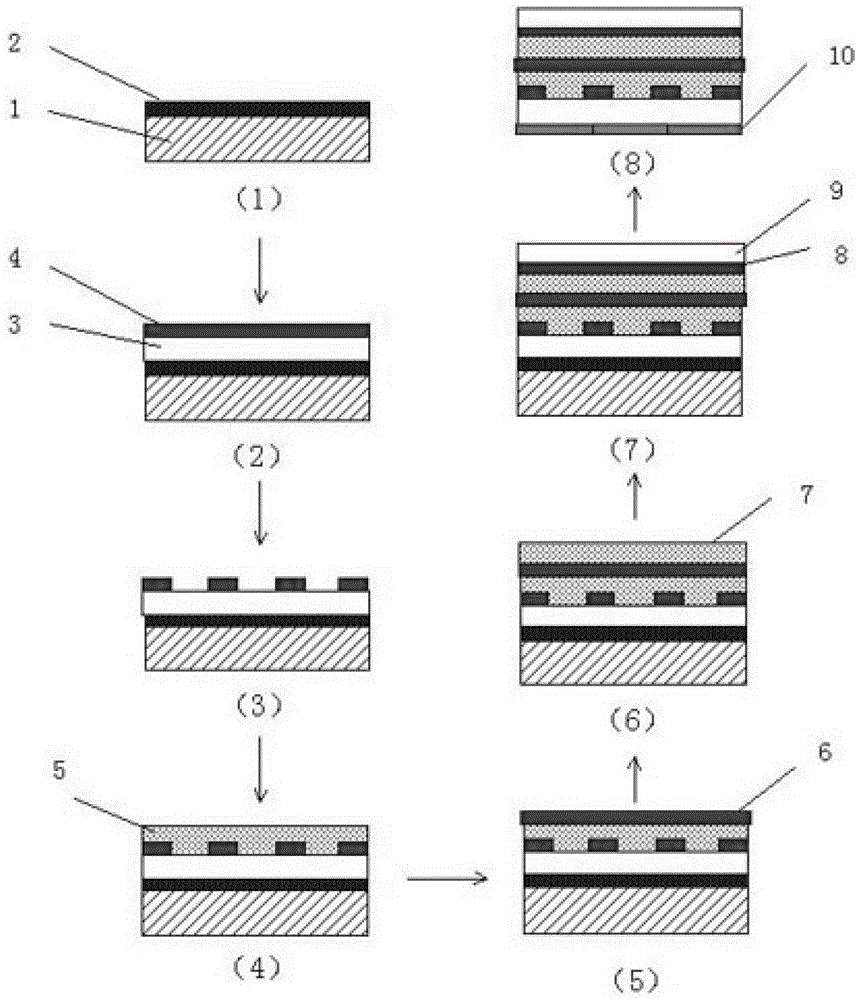Method for preparing printed flexible display module based on double-layer PDLC (Polymer Dispersed Liquid Crystal)
A flexible display, double-layer technology, applied in nonlinear optics, optics, instruments, etc., can solve the problems of reducing the off-state light transmittance of printed flexible displays, hindering the development of printed flexible displays, and lacking research reports on preparation processes, etc. Achieve the effect of reducing production cost, ensuring processing accuracy and simplifying processing technology
- Summary
- Abstract
- Description
- Claims
- Application Information
AI Technical Summary
Problems solved by technology
Method used
Image
Examples
Embodiment Construction
[0026] The technical solutions provided by the present invention will be further described below in conjunction with the accompanying drawings and specific embodiments, and the following embodiments do not constitute limitations on the technical solutions protected by the present invention.
[0027] A method for preparing a flexible display module based on double-layer PDLC printing, characterized in that it comprises the following steps:
[0028] (1) Select silicon or glass wafers with high flatness and single-sided polishing as the hard substrate 1, and clean the hard substrate 1 with deionized water, dry the hard substrate 1 after cleaning, and coat the surface of the hard substrate 1 with Cloth a layer of adhesive layer 2. A single-polished silicon wafer is used as the hard substrate 1, and the substrate is firstly treated: ultrasonically cleaned with acetone, ethanol and deionized water, and dried in a vacuum oven at 180° C. for 3 hours. Then coat a layer of polydimethyl...
PUM
| Property | Measurement | Unit |
|---|---|---|
| surface smoothness | aaaaa | aaaaa |
| thickness | aaaaa | aaaaa |
| thickness | aaaaa | aaaaa |
Abstract
Description
Claims
Application Information
 Login to view more
Login to view more - R&D Engineer
- R&D Manager
- IP Professional
- Industry Leading Data Capabilities
- Powerful AI technology
- Patent DNA Extraction
Browse by: Latest US Patents, China's latest patents, Technical Efficacy Thesaurus, Application Domain, Technology Topic.
© 2024 PatSnap. All rights reserved.Legal|Privacy policy|Modern Slavery Act Transparency Statement|Sitemap

